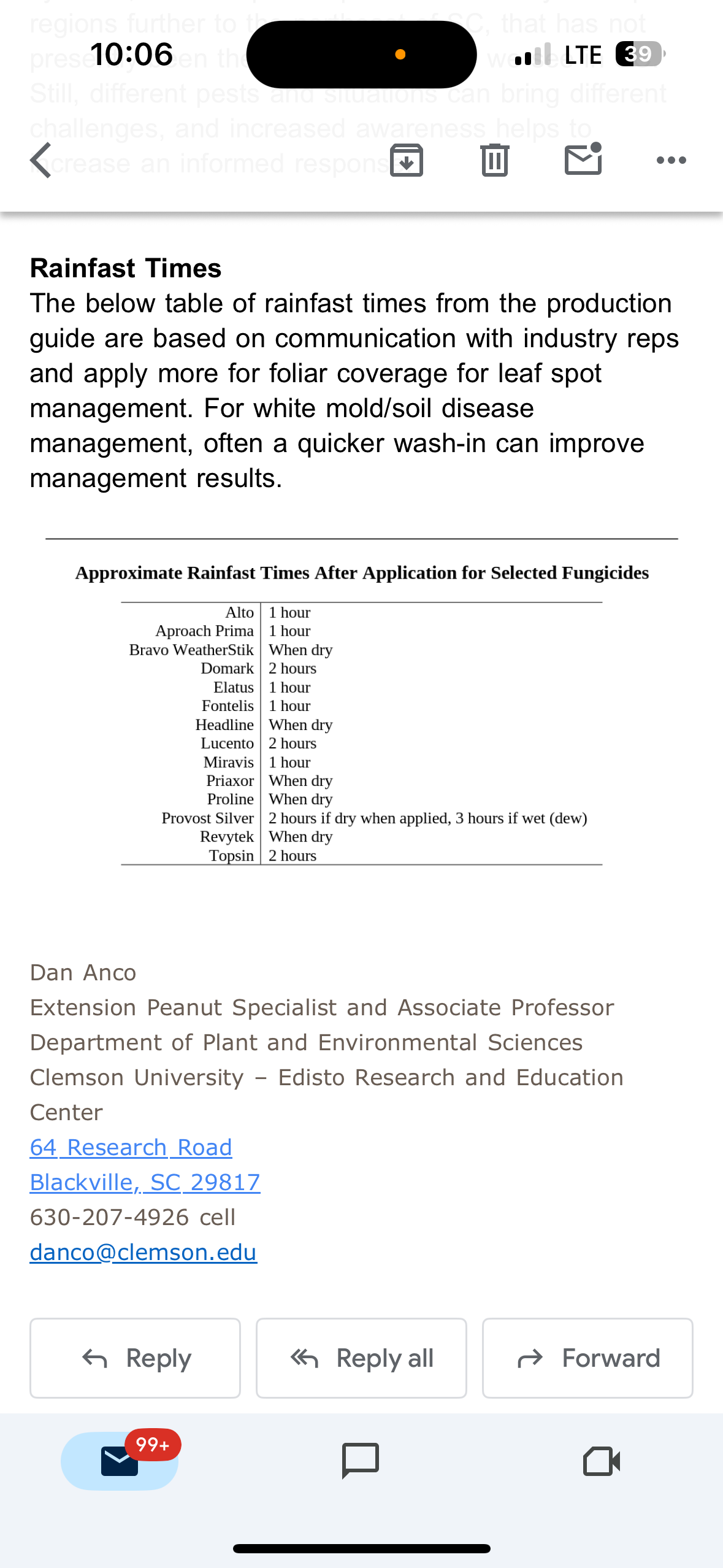Rain-Free Period for Fungicides and Prohexadione Calcium Peanut Notes No. 213 2025
go.ncsu.edu/readext?1088007
en Español / em Português
El inglés es el idioma de control de esta página. En la medida en que haya algún conflicto entre la traducción al inglés y la traducción, el inglés prevalece.
Al hacer clic en el enlace de traducción se activa un servicio de traducción gratuito para convertir la página al español. Al igual que con cualquier traducción por Internet, la conversión no es sensible al contexto y puede que no traduzca el texto en su significado original. NC State Extension no garantiza la exactitud del texto traducido. Por favor, tenga en cuenta que algunas aplicaciones y/o servicios pueden no funcionar como se espera cuando se traducen.
Português
Inglês é o idioma de controle desta página. Na medida que haja algum conflito entre o texto original em Inglês e a tradução, o Inglês prevalece.
Ao clicar no link de tradução, um serviço gratuito de tradução será ativado para converter a página para o Português. Como em qualquer tradução pela internet, a conversão não é sensivel ao contexto e pode não ocorrer a tradução para o significado orginal. O serviço de Extensão da Carolina do Norte (NC State Extension) não garante a exatidão do texto traduzido. Por favor, observe que algumas funções ou serviços podem não funcionar como esperado após a tradução.
English
English is the controlling language of this page. To the extent there is any conflict between the English text and the translation, English controls.
Clicking on the translation link activates a free translation service to convert the page to Spanish. As with any Internet translation, the conversion is not context-sensitive and may not translate the text to its original meaning. NC State Extension does not guarantee the accuracy of the translated text. Please note that some applications and/or services may not function as expected when translated.
Collapse ▲Just in case it was overlooked, Dr Anco included a table with the rain-free period for many of the fungicides we use. I’ve provided it here. Based on that table, if you get a few hours without rain after application, efficacy is likely not compromised by rain. If you are concerned about protection but have only a few hours without rain, rather than apply the next spray immediately, I would tighten the interval between the spray in question and your next spray. One question is about follow ups after Miravis plus Elatus. This program is protective only, so if you were rained out this week, make sure your next spray is not Chlorothalonil plus tebuconazole. This spray is a protectant only, and a fungicide treatment with a degree of curative activity is best.
Try not to panic if this week is 3 weeks since your Miravis plus Elatus spray. Historically, this program has given us 4 weeks of protection. However, spray your follow up just as soon as you can. Control and yield drop in a major way if the interval between Miravis plus Elatus and the next spray is 5 weeks.
With respect to prohexadione calcium, don’t repeat the spray immediately or even the following week if you were rained on after the spray. We just sprayed a trial yesterday that only had 45 minutes. However, it is likely that we will get a lot out of that spray. We do not need to apply high rates of Prohexadione calcium. If we spray very soon after a spray that is in question, and we get good activity out of the spray in question, the second spray will result in the plant getting a much higher rate than needed. We know we can apply too much Prohexadione calcium. There have been reduction in peanut yield in some cases.



